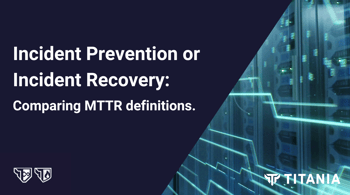Proactive Security can be defined as a pre-emptive approach to cybersecurity that seeks out and mitigates likely threats before they pose a danger to an organization. To develop a proactive security strategy, organizations need a comprehensive understanding of both their attack surface and their threat landscape, to determine their exposure to real-world attacks. This allows organizations to map potential attack paths and fix vulnerabilities that would most likely result in a data breach.
In 2024, Omdia reported that the overall cybersecurity market is on the verge of a significant shift toward Proactive Security, with organizations of all shapes and sizes demonstrating a change in the way that they manage network risks, to improve operational resilience. Increasingly, organizations are recognizing the need to prioritize fixes for their most exploitable vulnerabilities, before their adversaries can take advantage of them. Larger and more “security mature” organizations are leading the way.
What is a proactive approach to cyber security?
A proactive approach to cyber security focuses on understanding what the impending threats are to your organization and where an attack is likely to be targeted.
Attack surface management, risk-based vulnerability management, security posture management, incident simulation and testing, penetration testing, and red teaming are typically classified as proactive security measures.
A proactive security strategy uses these measures to identify the weak points in the organization’s defenses before an attacker does; by mapping known vulnerabilities to known tactics, techniques and procedures (TTPs) used by threat actors that are known to target similar organizations. Proactive security is also known as exposure management.
Increasingly, it is believed that a proactive security approach requires a new type of technical solution that uses exposure intelligence to automatically prioritize and fix risks, based on threats ‘in the wild’.
What is a Proactive Security solution?
Proactive security solutions are a distinct category of security automation that augment the capabilities of traditional preventative and reactive solutions to help organizations get ahead of threats. They enable organizations to determine where they are most at risk of being breached and to minimize those risks first, to provide continuous security protection.
Omdia explains that this requires a specific set of technical capabilities to “search for indicators of exposure, validate those exposures, and recommend and perform actions to eliminate or mitigate those exposures, before they are exploited”.
Recent research by Omdia indicates that a sizeable minority of organizations are already deploying proactive security solutions.
Why interest in proactive security is gathering pace
The rapid expansion of the modern attack surface – which encompasses cloud, network infrastructure, endpoint, internet of things (IOT) and code-based assets – has resulted in a significant increase in the number of exploitable security weaknesses and vulnerabilities that an organization needs to manage on a daily basis.
Coupled with hacker innovation and prevalence, where hackers outnumber cyber protection professionals by as many as 50:1,this has led to an exponential rise in the number of network security breaches, of which:
- 68% of have a human-error component,
- 15% involve third-party software or a supply chain vendor being affected by a vulnerability, and
- one-third involve ransomware or some other extortion technique.
High monetary losses associated with breaches, which according to the 2024 Verizon study of ransomware and extortion breaches, equate to an average loss of $46000, with some losses reported at more than $1m.
Organizations with an average of 1000 employees report that they deal with at least three workforce-related incidents every week. And operationally, the damage can be catastrophic.
In response, organizations have been seeking a way to get visibility of their exposure in real-time, to stay one step ahead of potential threats. Shifting away from a reactive approach to security, where threats are dealt with as they occur, to a more proactive approach that anticipates and mitigates the tactics, techniques, and procedures that are actively being used by threat actors.
By understanding where they are most vulnerable, organizations can prioritize their security efforts and resources more effectively. This proactive approach to security not only helps to prevent attacks but also minimizes the potential damage should a breach occur, making organizations more operationally resilient. In a world where cyber threats are constantly evolving, the ability to proactively identify and address security gaps is becoming an essential component of any robust security strategy.
Research from Omdia makes clear that “organizations of all sizes and in geographies are embracing Proactive Security solutions. More than 70% of respondents have increased spending on Proactive Security solutions versus a year ago, clearly outpacing spending on preventative and reactive solutions.”
To find out more about the results from this research visit titania.com/proactive-security-solutions.
Proactive Network Security with Nipper Resilience
Tasked with operational readiness and resilience in a rapidly changing threat environment, NOC, SOC and Incident Response teams need visibility of:
- Exploitable vulnerabilities introduced by planned and/or unauthorized network changes;
- Overall attack surface posture by mission critical segments;
- Exposure to specific APT TTPs as a consequence of network misconfigurations and software vulnerabilities; and
- Indicators of compromise, including macro segmentation violations (IPs, Ports and Users).
Nipper Resilience has been designed to free up and focus an organization’s scarce human cyber resource on business-critical attack surface readiness and resilience. Building on Nipper’s vulnerability impact assessment accuracy and risk prioritized remediation know-how, Nipper Resilience augments network risk visibility with macro segmentation violation and attack exposure analysis.
Learn more about Nipper Resilience, visit titania.com/products/nipper-resilience.






